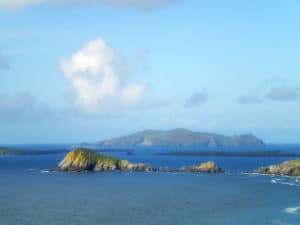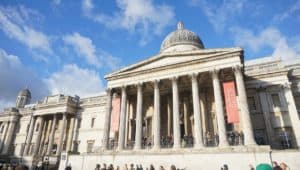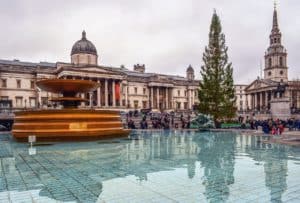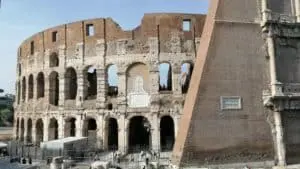The Significance of the Irish Harp in National Identity and Cultural Heritage

Updated On: April 23, 2024 by Noha Basiouny
The Irish harp, with its ornate frame and distinctive sound, has long been an emblem of Ireland’s identity and cultural heritage. Serving as a national symbol, it represents much more than a mere musical instrument; it embodies the spirit of Ireland’s culture, history, and artistic excellence. The harp’s significance has evolved through the ages from being a revered object in the annals of mythology and legend to a potent icon of political and symbolic resistance.
It holds a special place in the hearts of the Irish people and commands respect and admiration for its role in shaping the national consciousness. The harp’s design and craftsmanship echo Ireland’s rich tradition of art and the undeniably important role it plays within society. It is intricately woven into the fabric of educational systems, and its legacy continues to thrive, resonating through the modern impacts of Irish music and its portrayal in both art and society.
Table of Contents
Historical Significance of the Irish Harp
In our exploration of the Irish harp, we encounter a resonant thread woven through our nation’s past. This iconic symbol serves as a testament to Ireland’s rich cultural tapestry, from its ancient origins to its role in myths and royalty.
Ancient Beginnings
The Irish harp, recognised as one of the world’s oldest instruments, has roots that stretch back to the ancient civilisations of Egypt and Mesopotamia. Although these early harps bear little resemblance to the modern Irish variant, they set the precedent for what would become a fundamental aspect of Gaelic society. Over time, the harp evolved, adopting features that would make it uniquely Irish.
The High Kings and Brian Boru
Linked intricately with our heritage, the harp was a celebrated symbol of the Gaelic order. It reached an apogee during the time of Brian Boru, the famed High King of Ireland, who was also an accomplished harpist. Artisans crafted harps for the nobility, and the instrument played a crucial role in securing the king’s stature, both as a figure of authority and cultural significance.
The Harp in Irish Mythology
Our cherished Irish mythology interlaces the harp with tales of magic and enchantment. The instrument was thought to possess otherworldly powers, capable of controlling human emotions and the environment. This mystical element further cemented the harp’s prominence in the nation’s cultural imagination, intertwining it with the very essence of what it means to be Irish.
By recognising the historical importance of the Irish harp, we honour the myriad stories and legends that form the backbone of our nation’s identity.
Design and Craftsmanship
The Irish harp, with its meticulously crafted design and construction, is not only a beloved instrument but also a symbol of cultural heritage. Its creation involves a confluence of traditional craftsmanship and careful selection of materials—each component playing a pivotal role in shaping the harp’s distinctive sound and aesthetic.
Materials and Construction
The traditional Irish harp is a testament to craftsmanship. Each is built using a variety of natural materials, most commonly wood for the body and brass for the pins. The strings, historically made from metal, play a crucial role in the harp’s tonal quality. Modern iterations may use nylon or gut. The exquisite sound of the harp is a direct result of the individual maker’s skill in shaping these materials and the precise design of the soundboard.
The Brian Boru Harp
One of the most renowned harps in Irish history is the Brian Boru harp. Recognised as a national emblem, the harp dates back to the 14th Century and is named after one of Ireland’s greatest high kings. Its design, featuring a unique series of intricately carved oak and willow, has been an inspiration for many traditional harp craftsmen. The strings of this iconic harp vary in number, often around 30, made of brass, and are manipulated by the pins to produce melody. This harp can be experienced at Trinity College, and it remains a striking example of historical Irish craftsmanship and design.
The Harp as a National Emblem
The Irish harp is not just a musical instrument; it is a powerful emblem that is deeply embedded in the fabric of Ireland’s national identity. Its symbolic significance is evident in various national symbols and corporate logos.
From Coins to Flags
The harp has been a fixture on Irish coins since the Middle Ages, signifying the nation’s legacy and cultural heritage. The modern Irish euro coins proudly display the harp, linking contemporary Ireland with its historical roots. This emblem found its way onto the Irish green flag in the 17th century, and later, the Irish flag adopted in the 20th century continued the tradition of featuring the harp, albeit in a less prominent role.
Official Documents and Corporate Logos
As for official documents, the harp constitutes an integral part of Ireland’s coat of arms, often seen on government publications and the presidential seal. It conveys authority and authenticity. In the realm of commerce, the harp serves as an unmistakable trademark. The logo of Guinness is globally recognised, with the harp signifying the brand’s Irish origins. Similarly, Ryanair, one of Europe’s leading airlines, also utilises the harp in its logo, reinforcing the connection between the emblem and modern Irish enterprise.
Cultural Reverberation and Modern Impact

The Irish harp, with its melodious strings, has far surpassed its role as a mere musical instrument to become a resonant symbol in Irish culture and beyond. Its influence can be seen in various aspects of modern life, including music, literature, and cultural festivities.
Music and Entertainment
In the realm of music and entertainment, the harp’s influence is profound. It’s a central component of traditional Irish music, serving as both a solo and an accompaniment instrument. Harpists are revered for their skill and have a significant presence at festivals celebrating Irish culture. The legacy they carry forward is a testament to the timeless role of the harp in musical expressions.
Literary References
The significance of the harp has also been immortalised by Irish literary giants such as W.B. Yeats and James Joyce. Their works often include rich references to the harp, highlighting its importance as a national symbol and its ethereal quality. The instrument’s strings echo through the pages of Irish literature, further cementing its place in the cultural heritage of Ireland.
Cultural Celebrations
The harp is integral to Irish cultural celebrations, where its image and sound can often be found. From St. Patrick’s Day parades to art exhibitions, the emblem of the harp is ever-present. It is not just limited to Ireland; the Irish diaspora has carried the harp’s symbolism to far-reaching corners of the world, ensuring its continued impact on global celebrations of Irish identity.
The Harp in Art and Society
The Irish harp is not only a national symbol but also a significant emblem in Irish visual arts and society, intricately woven into the fabric of Irish culture. Its presence is felt from galleries to gatherings, often encapsulating the spirit of Ireland’s rich heritage.
The Harp in Visual Arts
We find the Irish harp celebrated across various forms of visual arts. It has been immortalised in countless paintings and sculptures, which often highlight its elegance and the cultural identity it represents. At the National University of Ireland, for example, one may observe the harp depicted in the institution’s iconography, symbolizing a deep connection to Irish academic and cultural history.
Irish tattoos frequently incorporate the harp, reflecting personal pride and cultural affiliation. It’s not just a musical instrument; it stands as a potent icon of Ireland—akin to other Celtic symbols—representing folklore and identity, often intertwined with motifs like shamrocks and Celtic knots.
Social Events and Gatherings
In social settings, the harp is a centrepiece that brings Irish music to life. Its melodies resonate at numerous events, from formal state receptions to intimate pub sessions. The harp has a unifying effect, gathering people and creating a shared experience that echoes Ireland’s communal traditions.
Festivals and cultural events often feature harpists, underscoring the instrument’s role in Irish society. It’s an emblem of social cohesion, an instrument through which the Irish narrative is told and retold, fostering a sense of community and continuity with the past.
Musician Mythos and Legends

In the realm of Irish music, legendary figures and their engaging narratives have always been a cornerstone of the cultural fabric. These stories and characters not only entertain but also preserve a rich heritage that echoes through time.
Turlough O’Carolan and the Bardic Tradition
To comprehend the legendary stature of Turlough O’Carolan, it is essential to delve into the ancient Bardic tradition. O’Carolan, a blind harpist who lived from 1670 to 1738, is revered as one of the last Irish Bards. As a Bard, O’Carolan occupied a crucial role in Irish society, composing and performing music for the chieftains of Ireland. Despite his blindness, O’Carolan travelled across Ireland, creating melodies that still resonate within the heart of Irish culture. He is celebrated not just for his music but also for symbolising the transition from the medieval Bardic tradition to the modern era of musicianship.
Folk Tales and Storytelling
The harp, ever-present in Irish mythology, serves as a bridge to a mystical past, where harpers were seen as custodians of history and folklore. Embellished within these folk tales are accounts of harpers who enchanted both the common folk and nobility, often thought to possess otherworldly abilities bestowed by the mystical Tuatha De Danann, the fabled race of Fairy folk. These musicians and storytellers played a pivotal role in the Irish Literary Revival, invoking through their crafts an enduring sense of national identity and cultural pride. O’Carolan himself became a mythical figure, his work enveloping the essence of Irish legend, where each note tells a tale and every song weaves a fragment of the historical tapestry.
The Harp in Popular and Commemorative Culture

In our discussion of the Irish harp, its influence permeates both popular and commemorative aspects of culture, underscoring Ireland’s heritage and a collective sense of national pride.
National Holidays
During national holidays, the harp features prominently as a symbol of the shared history and passion that we, as part of the Irish community, celebrate. Specifically, on St. Patrick’s Day, the harp’s image, alongside shamrocks and other Gaelic symbols, becomes ubiquitous. These symbols spark a unifying spirit of love and reverence for our traditions.
Public Representation in Media
In the realm of media, the Irish harp is visible in the logos of various Irish companies, affirming its stature as a national symbol. It is not only trademarked by the state but also adopted by brands to evoke a sense of authenticity and Irish identity. Moreover, in the digital space, you will often find the harp elegantly displayed on websites associated with the Irish heritage or Gaelic societies. This instrument’s graceful form is an essential part of our communicative identity, representing Ireland in official capacities both at home and internationally.
Political and Symbolic Resistance
The Irish harp, beyond its gentle melodies, has strummed the chords of nationalism and sovereignty, becoming a potent emblem of political and symbolic resistance against British rule.
Colonial History and Nationalism
The history of the harp is a story of resilience. During periods of British rule, the harp emerged as a rallying symbol of Irish nationalism. It signified our yearning for independence and the cultural identity that we clung to despite being under colonial power. Nationalism grew as our harp resonated with calls for rebellion and the assertion of our Irish identity.
Symbols of Sovereignty
In the tumult of political strife, the harp became intertwined with Ireland’s quest for sovereignty. It featured flags and emblems of revolutionary groups, embodying the nation’s struggle. Symbols like the uncrowned harp became synonyms with resistance; it was through such icons that we defiantly voiced our desire for a sovereign Irish state free from colonial dominance.
The Harp in Education and Knowledge

In educational settings and repositories of knowledge, the Irish harp serves as an intricate conduit for cultural transmission and scholarship.
Scholastic Studies
We find the Irish harp deeply embedded within the curricula of music and cultural studies programmes. Trinity College, a prestigious institution in Dublin, offers courses delving into the historical and cultural significance of this ancient musical instrument. Students and scholars at the college and other educational institutions conduct research on various aspects of the harp, from its design and evolution to its role in Irish identity and national pride.
Museum Exhibitions
Museums play a critical role in showcasing the Irish harp. Notably, the National Library of Ireland exhibits the harp as part of its significant artefacts, empowering visitors to gain a deeper appreciation for Ireland’s national symbol. The displays often include historical information, highlighting the harp’s design variations over centuries and its presence in Irish life and lore. The Irish Harp – History And Meaning – Ireland Travel Guides exhibits the historical ‘Brian Boru harp’, which can be found at Trinity College, allowing the public to witness a cornerstone of national heritage.
Legacy and Continuance

The Irish harp carries a rich tapestry of tradition, evolving over centuries to maintain a vital presence in cultural expression. From the courts of ancient chieftains to the modern concert hall, its influence persists.
The Evolution of Harp Music
Harp music’s narrative in Ireland is woven intricately through history. Beginning in medieval times, the harp was a symbol of Irish nationalism, often associated with the legendary figure of Brian Boru. Its music was central to ceremonial occasions and courtly life. In the 18th and 19th centuries, the harp witnessed a decline due to changing social and political landscapes. However, towards the end of the 19th century, a resurgence took root, fuelled by the Celtic Revival and musicians dedicated to its preservation.
This robust revival has led to adaptations in both the instrument’s construction and its repertoire. The introduction of the pedal harp in Europe allowed for a broader musical range, thus expanding its presence into classical orchestras. Conversely, the smaller Celtic harp retained its traditional diatonic scale and suitably preserved the charm of ancient Irish tunes. Today, harpists blend both old and new, ensuring the harp’s melody remains vibrant and continually evolving.
Influence on Contemporary Art Forms
The harp’s influence extends beyond mere instrumentation; it permeates other art forms as well. Contemporary musicians from diverse genres draw inspiration from the harp’s undulating rhythms and melodic patterns. The harp’s distinct sound can be heard in global genres, tapping into the musical pulse of Scotland to the melodic tales of Africa.
The instrument has found a place on the modern stage, accentuating theatrical performances and lending an ethereal tone to contemporary dance. Visual artists, poets, and writers often reference the harish from its physical elegance to its auditory charm, depicting it as a symbol of cultural continuity. Through collaboration, innovation, and celebration, the harp’s legacy persists, resonating through our collective consciousness.
The Irish harp’s story is more than just a piece of Irish history or tradition; it is a flowing, living stream of cultural continuity that continues to enrich and influence the world of art and music.
Frequently Asked Questions
We find that there are commonly asked questions about the Irish harp’s cultural significance and symbolism. Below, we’ve addressed these inquiries with concise, fact-based answers.
What role did the Irish harp play in American cultural heritage?
The Irish harp influenced American cultural heritage by being a symbol of the large Irish immigrant community, which has significantly contributed to the country’s cultural mosaic. Its presence in music and iconography represents the preservation and celebration of Irish America’s heritage.
How is the Irish harp represented as a national symbol?
The Irish harp is the official national symbol of Ireland, known worldwide for its distinctive design based on the historic ‘Brian Boru harp’. It appears on official state documents, currency, and the presidential seal, representing Ireland’s sovereignty and cultural identity.
What are the differences between the Irish harp and the Guinness harp in terms of symbolism?
The differences between the Irish harp and the Guinness harp are orientation and context; the state emblem faces right, and the Guinness harp faces left. The Guinness harp symbolises the brand’s Irish heritage, while the Irish harp symbolises the nation itself.
What historical significance does the Irish harp carry on the nation’s flag?
The Irish harp has never been part of the national flag, which is a tricolour of green, white, and orange. However, historically, the harp was used on flags and banners representing Ireland, particularly during the medieval and early modern periods, emphasising Ireland’s sovereignty.
What are common interpretations of the Irish harp depicted in tattoos?
In tattoos, the Irish harp often symbolises pride in Irish heritage, with many choosing it to represent their connection to Irish culture and ancestry. It can also express an appreciation for music and art, given the harp’s historical significance in Celtic music traditions.
Who was Brian Boru, and what is his association with the legendary Irish harp?
Brian Boru was a High King of Ireland renowned for his role in the battle of Clontarf in 1014. The legendary Irish harp, sometimes referred to as the ‘Brian Boru harp’, is named after him, signifying his powerful legacy and enduring influence on Irish cultural icons.






